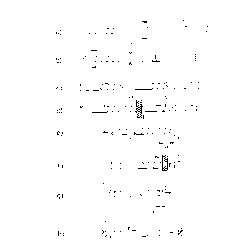Some of the information on this Web page has been provided by external sources. The Government of Canada is not responsible for the accuracy, reliability or currency of the information supplied by external sources. Users wishing to rely upon this information should consult directly with the source of the information. Content provided by external sources is not subject to official languages, privacy and accessibility requirements.
Any discrepancies in the text and image of the Claims and Abstract are due to differing posting times. Text of the Claims and Abstract are posted:
| (12) Patent Application: | (11) CA 2200905 |
|---|---|
| (54) English Title: | METHOD OF PRODUCING A TRANSVERSE FORCE BOLT AND TRANSVERSE FORCE BOLT PRODUCED BY THIS METHOD |
| (54) French Title: | PROCEDE POUR LA FABRICATION D'UN BOULON DE FORCE TRANSVERSALE ET BOULON DE FORCE TRANSVERSALE AINSI PRODUIT |
| Status: | Deemed Abandoned and Beyond the Period of Reinstatement - Pending Response to Notice of Disregarded Communication |
| (51) International Patent Classification (IPC): |
|
|---|---|
| (72) Inventors : |
|
| (73) Owners : |
|
| (71) Applicants : |
|
| (74) Agent: | MARKS & CLERK |
| (74) Associate agent: | |
| (45) Issued: | |
| (22) Filed Date: | 1997-03-25 |
| (41) Open to Public Inspection: | 1998-09-25 |
| Availability of licence: | N/A |
| Dedicated to the Public: | N/A |
| (25) Language of filing: | English |
| Patent Cooperation Treaty (PCT): | No |
|---|
| (30) Application Priority Data: | None |
|---|
In the course of the production of a transverse force
bolt (10) in accordance with the invention, the sheath (2)
made of a rod-shaped pipe of stainless steel is drawn on a
rod-shaped core (1) of conventional structural steel. In the
process the exterior dimension can be simultaneously calibrated
(20). The rod-shaped semi-finished product (3) is subsequently
cut into rods (4) by means of a saw (30). By means of
a hydraulic press the core is pushed out of the rod (4) by a
length (a), and the ejected portion (5) is cut off.
Subsequently the core (1) is pushed back by half the length
(a/2) of the cut-off portion (5), and finally the open ends
(6) of the sheath (2) are closed.
This results in a transverse force bolt (10) of particularly
great strength, which is very precise and extremely low
cost.
La présente invention a pour objet un boulon de force transversale (10) dont la fabrication comporte les étapes suivantes : une gaine (2) composée d'un tube en acier inoxydable est étirée sur un noyau (1) en forme de barre en acier de construction ordinaire. Au cours du procédé, les dimensions extérieures peuvent être calibrées simultanément (20). Le produit semi-fini en forme de barre (3) est ensuite coupé en barres (4) au moyen d'une scie (30). l'aide d'une presse hydraulique, le noyau est chassé à l'extérieur de la barre (4) sur une certaine longueur (a), et la partie éjectée (5) est coupée. Ensuite, le noyau (1) est repoussé vers l'intérieur de la gaine sur une distance (a/2) correspondant à la moitié de la partie éjectée (5); finalement, les extrémités ouvertes (6) de la gaine (2) sont fermées. Le boulon de force transversale (10) résultant de ce procédé de fabrication est produit à un coût extrêmement faible et est caractérisé par une force particulièrement grande et une grande précision.
Note: Claims are shown in the official language in which they were submitted.
Note: Descriptions are shown in the official language in which they were submitted.

2024-08-01:As part of the Next Generation Patents (NGP) transition, the Canadian Patents Database (CPD) now contains a more detailed Event History, which replicates the Event Log of our new back-office solution.
Please note that "Inactive:" events refers to events no longer in use in our new back-office solution.
For a clearer understanding of the status of the application/patent presented on this page, the site Disclaimer , as well as the definitions for Patent , Event History , Maintenance Fee and Payment History should be consulted.
| Description | Date |
|---|---|
| Inactive: IPC from MCD | 2006-03-12 |
| Application Not Reinstated by Deadline | 2001-03-26 |
| Time Limit for Reversal Expired | 2001-03-26 |
| Deemed Abandoned - Failure to Respond to Maintenance Fee Notice | 2000-03-27 |
| Application Published (Open to Public Inspection) | 1998-09-25 |
| Inactive: First IPC assigned | 1997-07-03 |
| Inactive: IPC assigned | 1997-07-03 |
| Letter Sent | 1997-06-25 |
| Inactive: Filing certificate - No RFE (English) | 1997-06-18 |
| Letter Sent | 1997-03-25 |
| Abandonment Date | Reason | Reinstatement Date |
|---|---|---|
| 2000-03-27 |
The last payment was received on 1999-03-17
Note : If the full payment has not been received on or before the date indicated, a further fee may be required which may be one of the following
Patent fees are adjusted on the 1st of January every year. The amounts above are the current amounts if received by December 31 of the current year.
Please refer to the CIPO
Patent Fees
web page to see all current fee amounts.
| Fee Type | Anniversary Year | Due Date | Paid Date |
|---|---|---|---|
| Registration of a document | 1997-03-25 | ||
| Application fee - small | 1997-03-25 | ||
| MF (application, 2nd anniv.) - small | 02 | 1999-03-25 | 1999-03-17 |
Note: Records showing the ownership history in alphabetical order.
| Current Owners on Record |
|---|
| PECON AG |
| Past Owners on Record |
|---|
| ERICH MULLER |
| GOTTFRIED BREUER |